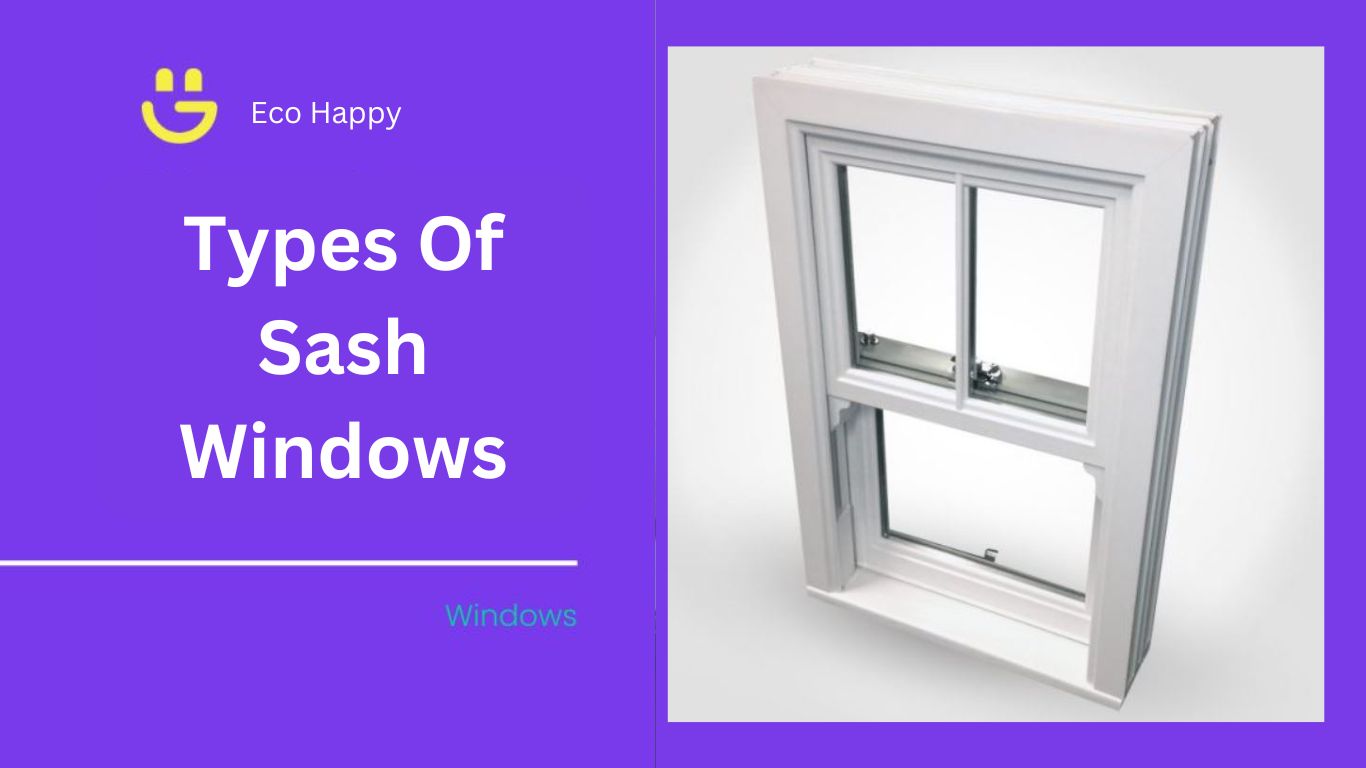Last Updated on November 14, 2025
Types Of Sash Windows: Styles, Costs & Benefits
Sash windows have long been a popular choice in the UK due to their timeless appeal, functionality, and ability to enhance the aesthetics of various property types.
Whether you’re a homeowner, landlord, or commercial property owner, understanding the different types of sash windows can help you make an informed decision on which style is best suited for your property.
In this guide, we’ll walk you through the different types of sash windows, their features, and how to choose the best one based on your needs and property type. From the classic timber designs to the modern uPVC alternatives, there’s a sash window style for every type of building.
We’ll also explore important considerations like the cost of new windows, energy efficiency, and restoration options, helping you decide which type of sash window is right for you.
Contents
- 1 Types Of Sash Windows: Styles, Costs & Benefits
- 1.1 Types of Sash Windows
- 1.1.1 Timber Sash Windows
- 1.1.2 uPVC Sash Windows
- 1.1.3 Aluminium Sash Windows
- 1.1.4 Victorian Sash Windows
- 1.1.5 Queen Anne Sash Windows
- 1.1.6 Edwardian Sash Windows
- 1.1.7 Bay Sash Windows
- 1.1.8 Venetian-Style Sash Windows
- 1.1.9 Sliding Sash Windows
- 1.1.10 Box Sash Windows
- 1.1.11 Double-Hung Sash Windows
- 1.1.12 Dummy Sash Windows
- 1.1.13 Flush Sash Windows
- 1.1.14 Difference Between Box Sash & Spring Sash Windows
- 1.2 Single Glazed vs Double Glazed Sash Windows
- 1.3 How to Choose the Right Sash Window for Your Property
- 1.4 Request a Free Quote for New Sash Windows
- 1.5 FAQs
- 1.6 Our Verdict
- 1.7
- 1.1 Types of Sash Windows
Types of Sash Windows
There are several types of sash windows available in the UK, each with its unique features and benefits. Understanding these options will help you select the best one for your property.
Timber Sash Windows
Timber sash windows are the traditional choice and are highly sought after for their aesthetic charm and durability. These windows are typically crafted from high-quality hardwood or softwood, and their natural finish adds character and warmth to any property.
Best For: Period properties, listed buildings, or homeowners who want to maintain the original charm of their property.
| Benefits |
| Considerations |
If you own a period home and want to keep the classic look, timber sash windows might be your best option. You can also read more about how to insulate old sash windows to improve energy efficiency while keeping the original design.
uPVC Sash Windows
uPVC sash windows are a modern, low-maintenance alternative to traditional timber windows. Made from unplasticised polyvinyl chloride (uPVC), these windows are resistant to rot, require less maintenance, and come in a variety of colours and finishes.
Best For: Homeowners or landlords seeking a low-maintenance, energy-efficient option, especially for properties with a more modern aesthetic.
| Benefits |
| Considerations |
If you are considering uPVC sash windows or wooden sash windows, it’s important to weigh factors such as maintenance, aesthetics, and energy efficiency.
uPVC sash windows do come with their own set of challenges. Homeowners may encounter issues such as warping, poor insulation, or difficulty with operation over time. To help you understand the common pitfalls, we’ve outlined the problems with uPVC sash windows, so you can make a well-informed choice for your home’s style and functionality.
Aluminium Sash Windows
Aluminium sash windows offer a sleek and contemporary look. They are more commonly found in commercial or modern residential buildings, but they can work in period homes too, especially if you’re aiming for a more industrial or minimalist design.
Best For: Modern properties or homeowners looking for a sleek, contemporary look.
| Benefits |
| Considerations |
If you’re renovating a property and wondering about the cost of sash window restoration, aluminium windows might also be a good consideration, especially in commercial spaces or flats.
Victorian Sash Windows
Victorian sash windows are often characterised by their larger panes of glass, which allow for greater natural light, along with distinct design features such as decorative horns on the upper sash and the presence of glazing bars to break up the window into smaller sections.
Best For: Victorian homes, listed properties, or those looking for a traditional yet light-filled window option.
| Benefits |
| Considerations |
Queen Anne Sash Windows
Queen Anne sash windows are often found in properties built during the early 20th century, typically from around 1890 to 1910. These windows combine elements from different styles, including the ornate detailing of the Victorian era and the more simplistic style of earlier Georgian windows.
Best For: Homes built during the late 19th or early 20th century, or homeowners looking for a blend of ornate and functional window design.
| Benefits |
| Considerations |
Edwardian Sash Windows
Edwardian sash windows often resemble Victorian windows but tend to be simpler and more functional. They usually feature a larger single-glazed panel in the lower sash, with simpler lines and fewer decorative elements than their Victorian counterparts.
Best For: Edwardian homes, homeowners seeking a balance of traditional design and modern functionality.
| Benefits |
| Considerations |
Bay Sash Windows
Bay sash windows are designed to project outward from the building, creating a bay or alcove inside. These windows are typically made up of three or more sash windows that provide expansive views and bring in more natural light, while also enhancing the property’s overall architectural appeal.
Best For: Properties with a bay or corner design, such as Victorian terraces, or homeowners wanting to create a more spacious and light-filled interior.
| Benefits |
| Considerations |
Venetian-Style Sash Windows
Venetian-style sash windows combine traditional sash functionality with the more elaborate and decorative elements found in Venetian blinds. This design often features intricate detailing in both the frame and the sashes, blending classic sash window functionality with opulence and design flair.
Best For: Luxury homes, contemporary renovations, or anyone wanting a unique, stylish, and functional sash window design.
| Benefits |
| Considerations |
Sliding Sash Windows
Sliding sash windows are a more modern version of traditional sash windows. Rather than being designed to open vertically, they are made to slide horizontally. They can often be made from timber or uPVC, and they offer a slightly different aesthetic while maintaining the key advantages of sash windows, like space-saving and ventilation.
Best For: Contemporary homes or where vertical space is limited, or if you’re looking for a modern twist on traditional sash windows.
| Benefits |
| Considerations |
Box Sash Windows
Box sash windows, also known as traditional sash windows, feature a double-hung design but are encased in a rectangular box frame. This design is often found in both Georgian and Victorian properties. They are a great option for those looking to restore or replicate a classic look.
Best For: Period properties and homeowners looking to restore the original design.
| Benefits |
| Considerations |
Double-Hung Sash Windows
Double-hung sash windows feature two movable sashes, allowing both the top and bottom parts of the window to be opened. This provides increased flexibility in terms of ventilation.
Best For: Larger properties, homes with more extensive space, or properties where ventilation is a priority.
| Benefits |
| Considerations |
Dummy Sash Windows
Dummy sash windows, sometimes called false sash windows, are a decorative feature that mimics the appearance of a functioning sash window, without the ability to open or move. These windows are typically used in situations where a traditional sash window would look out of place but the appearance is desired.
Best For: Those looking to replicate the appearance of sash windows without the functionality, often in non-livable spaces like upper stories or blind walls.
| Benefits |
| Considerations |
Flush Sash Windows
Flush sash windows are designed to sit flush within the frame, unlike traditional sash windows, which slightly protrude. This creates a sleek, streamlined appearance, offering a modern twist on the traditional sash window design.
Best For: Homeowners who want the charm of a traditional sash window with a more contemporary, low-maintenance finish.
| Benefits |
| Considerations |
Difference Between Box Sash & Spring Sash Windows
Box sash windows use a traditional system of weights and pulleys to raise and lower the sashes, while spring sash windows feature an internal spring mechanism for easy operation. Spring sash windows are typically easier to operate, but box sash windows maintain a more traditional, historical aesthetic.
Best For: Those looking for the traditional feel of box sash windows or the modern convenience of spring sash windows.
| Benefits |
| Considerations |
Single Glazed vs Double Glazed Sash Windows
Single-glazed sash windows consist of a single pane of glass, while double-glazed sash windows feature two panes with an air gap in between, offering improved thermal insulation. Double glazing is becoming increasingly popular due to its energy efficiency and noise-reduction benefits.
Best For: Homeowners looking to improve energy efficiency and reduce noise pollution.
| Benefits |
| Considerations |
If you’re wondering whether it’s possible to double glaze your existing sash windows, check out our expert guide for all the details.
How to Choose the Right Sash Window for Your Property
When deciding on the best type of sash window for your home, there are several factors to consider:
If your sash windows are showing signs of wear and tear, you may be wondering whether to opt for sash replacement or a complete window replacement. While sash replacement can preserve the charm and character of your property, a full window replacement might be a more cost-effective solution in some cases.
To help you make an informed decision, our comprehensive guide on sash replacement vs window replacement explores the pros and cons of each option, offering expert advice on how to choose the best route for your home’s needs.
Request a Free Quote for New Sash Windows
Ready to upgrade your property with beautiful, energy-efficient sash windows? Request a free, no-obligation quote today! Our team of experts can help guide you through the process and ensure that you choose the perfect sash windows for your home or commercial property.
FAQs
What is the difference between Georgian and Victorian sash windows?
Georgian sash windows typically have multiple small panes divided by glazing bars, often in a 6-over-6 or 8-over-8 design. This was due to the limitations of glass manufacturing at the time. In contrast, Victorian sash windows tend to have larger panes with fewer glazing bars, commonly in a 2-over-2 or single-pane style, reflecting advancements in glass production.
Do Edwardian houses have sash windows?
Yes, Edwardian houses often feature sash windows, but they tend to be a hybrid of Georgian and Victorian styles.
These windows are typically 6-over-2 or 6-over-1, with a more decorative and grand appearance compared to earlier designs, reflecting the increased emphasis on light and space in Edwardian architecture.
What is a cottage sash window?
A cottage sash window is a traditional style of sash window where the top sash is smaller than the bottom sash. This design was popular in rural and countryside homes, providing a classic, charming aesthetic while allowing more light through the larger lower sash.
They are often associated with timber frames and traditional glazing bars.
Do sash windows add value to a house?
Yes, sash windows can increase the value of a property, especially in period homes where maintaining historical authenticity is important. Well-maintained or restored sash windows enhance curb appeal, thermal efficiency, and heritage charm, making a home more attractive to buyers.
Modern sash windows with double glazing also improve insulation and energy efficiency, adding further value.
Our Verdict
When selecting the right window style for your home, it’s essential to consider all your options. While sash windows are a classic choice for period properties, casement windows offer a modern alternative with their sleek design and easy functionality.
To make the best decision for your home, it’s helpful to weigh the pros and cons of both styles. If you’re unsure which type suits your needs, our in-depth guide on casement vs sash windows can help you explore the key differences and make an informed choice that complements your home’s aesthetic and practical needs.






Tom Allen
Solar Expert